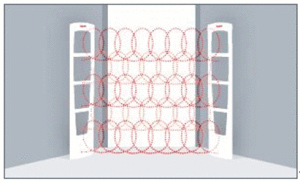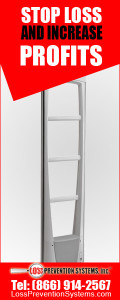 Ever given any thought to your receiving area and your back door? How often do you open it and walk away? Do you require a manager be present when it’s open, or do you “trust” your warehouse crew with a key? Have you ever considered that an unattended back door could not only cause shrink, but also compromise the safety of your customer and employees? If you answered yes to any of those questions, you may have a problem.
Ever given any thought to your receiving area and your back door? How often do you open it and walk away? Do you require a manager be present when it’s open, or do you “trust” your warehouse crew with a key? Have you ever considered that an unattended back door could not only cause shrink, but also compromise the safety of your customer and employees? If you answered yes to any of those questions, you may have a problem.
Last year around Thanksgiving, I was scheduled to receive a pallet of television sets for Black Friday. Three days before the big day and they were nowhere to be found, only my inventory system said they were received on a truck that had already been processed. That pallet was worth $7,500 so I started to panic; checking the few outside containers I had, both warehouses, the sales floor, anywhere I could think of. When I couldn’t locate them, I went to the camera system on the day that I should have received them. Sure as I’m sitting here, I saw my employee roll a pallet of TVs off the truck after watching for a little while. I saw the employee place the pallet where it should have gone, but then a few hours later, I saw another employee wheel them out the back door.
I knew instantly that they had been stolen. There’s no reason for them to go outside, and there was no reason for that particular employee to be in the warehouse. You know what else I saw? That my back door was wide open, and there wasn’t a manager anywhere to be found. Long story short, the employee confessed to stealing/reselling them. When asked how he’d known that he could get away with the crime, he stated that he always saw the back door open. Without a manager present, it became common knowledge amongst a certain group of employees that you could just walk whatever you wanted right out the back door.
Outside of basic employee theft, an unattended back door could also be an invitation to a robbery. Think about this for a minute; you’re a desperate criminal and you’ve decided that you plan to rob Store X. You’ve cased the place for a week now and learned that the safe is in the rear office, in close proximity to the warehouse. You’ve also noticed that the back door is constantly left wide-open with no one (witnesses) around. So would you: a) walk through the front door and announce a robbery for all the customers, employees cameras to see, or b) park in the rear of the store, enter through the open warehouse door and possibly catch the manager alone in the cash room? I’m no criminal, but I’d probably go with the second option.
Perhaps that is the worst-case scenario. Perhaps instead of robbing you of cash, a thief just sees an easy way to slip out of the store with large quantities of merchandise undetected? If your back door in constantly open with no one around, your regular thieves will absolutely take notice, and take advantage of it. So the next time you see your back door open, be the voice of change and help secure your store, your product and guarantee the safety of people in it.
 My grandparents owned a small hardware store back in the late 1950s. Back then, when my grandpa left at 5pm, he simply locked the back door, gathered his belongings and left, locking the double glass front door behind him with nothing more than a standard lock that you’d find on any home at the time. The front of the store was nothing but glass. He had cash and at least $100k worth of merchandise on the shelves. Wouldn’t it be nice if things could go back to the way they were back then? Could you imagine if you left your store this soft nowadays? Burglaries happen, and they happen often. Over the past ten years as a Regional LP manager for my company, I’ve had it happen a total of 12 times. About once a year, or so, someone, somewhere across my region, breaks into one of my stores; or at least tries to do so. We have a lot of things that we implement to prevent this from happening, so when someone is able to breach our perimeter, it’s usually caused by human error.
My grandparents owned a small hardware store back in the late 1950s. Back then, when my grandpa left at 5pm, he simply locked the back door, gathered his belongings and left, locking the double glass front door behind him with nothing more than a standard lock that you’d find on any home at the time. The front of the store was nothing but glass. He had cash and at least $100k worth of merchandise on the shelves. Wouldn’t it be nice if things could go back to the way they were back then? Could you imagine if you left your store this soft nowadays? Burglaries happen, and they happen often. Over the past ten years as a Regional LP manager for my company, I’ve had it happen a total of 12 times. About once a year, or so, someone, somewhere across my region, breaks into one of my stores; or at least tries to do so. We have a lot of things that we implement to prevent this from happening, so when someone is able to breach our perimeter, it’s usually caused by human error. Shoplifting costs the retail industry million of dollars daily.
Shoplifting costs the retail industry million of dollars daily. 




